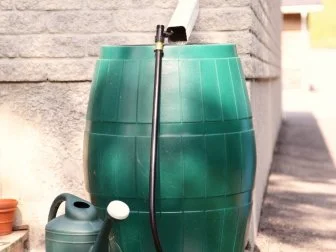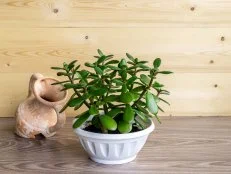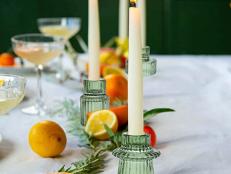How to Water Houseplants
Learn the art of watering houseplants and show off the green thumb you always knew you had.
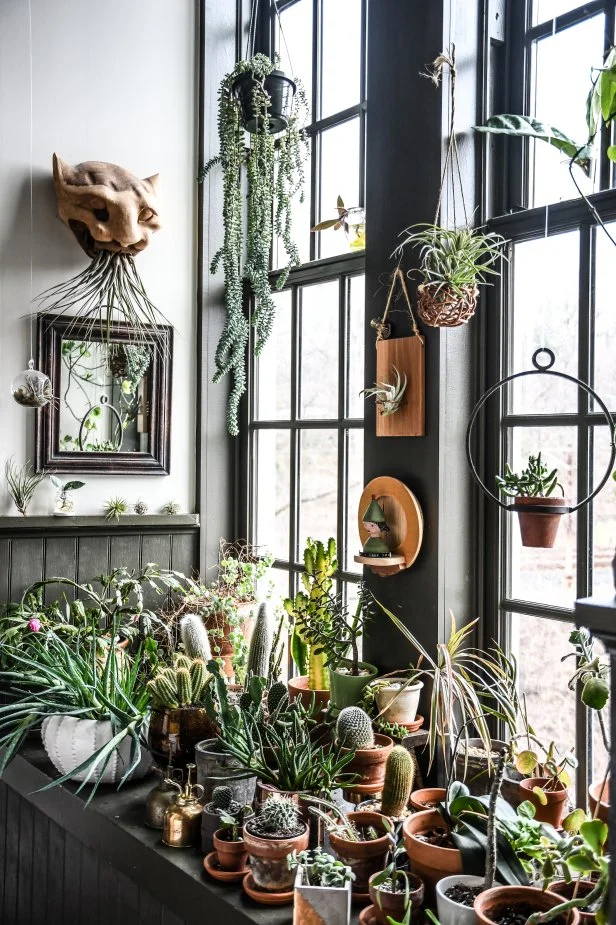
Courtesy of Hilton Carter
There’s an art to watering houseplants. While it seems simple, it just isn’t as easy as wetting the soil once a week. The first thing to understand is, not only does every houseplant have different watering needs, but those needs can change from house to house, meaning you truly must adapt to your plant as it adapts to your home. Read ahead for our watering tips and tricks that will keep your houseplants thriving.
What Type of Water to Use
The type of water you give your plants is a key element to their success that many people write off as unimportant. Naturally, plants prefer rainwater. So, collecting rainwater is a great option, if you’re able. For those who are unable or don’t want the added hassle, tap water is generally fine.
Conserve Water With a Rain Barrel
These easy-to-install barrels can save rainwater for your home and garden.
For best results, use tap water that’s been sitting for at least 24 hours to allow the chlorine to dissipate. However, if your plant is desperate for a drink, room-temperature water straight out of the tap is better than nothing. Never use softened water to water plants, as the added salts will build up in the soil, leading to problems over time.
How Much Water to Give Houseplants
There’s no such thing as an indoor plant. So, when you bring a plant into your home, the goal should be to mimic its natural environment. If your plant thrives in an arid setting, such as cacti or succulents, giving it too much water will make it suffer. Likewise, if your plant flourishes in a rainforest, such as a monstera deliciosa, it will have higher water requirements.
This doesn’t mean some plants need a full cup of water and others need a drop. Instead, it’s often best to soak the plant’s soil until water drains from the pot’s drainage holes, ensuring the water reaches the plants roots. After five to ten minutes, the plant may have pulled some more water up from the drain pan, but you should remove any excess to prevent root rot.
Are You Using the Right Pots for Your Houseplants?
Choosing the right pot for your plant is not just about looks. Different materials affect your plant's health in a variety of ways. Houseplant expert Hilton Carter explains what type of planter is best for each type of houseplant.
When buying a new plant, always consult its tag for watering needs or research your specific plant. If there’s no tag, ask about caring for your plant before purchasing. But remember, the plant’s needs may change once it acclimates to your home’s environment, so be sensitive to how it’s responding to the amount of water you’re giving it and adjust as needed.
How Often to Water Houseplants
Just like the amount of water, a plant’s natural environment determines the frequency at which it receives water. Basing your watering routine around this will help your plant thrive. For example, cacti thrive in deserts that receive little to no rainfall. However, when the rain comes around, it often comes as a downpour. So, many house cacti thrive when their soil nearly completely dries out, but they love a deluge when it’s time. On the other hand, something like a fern becomes stressed when the soil is allowed to dry out, so keeping a fern's soil evenly moist will yield better results. Every plant is different, so research your specific plant to better understand its preferences, then base your routine on its specific soil moisture needs.

Sarah Busby
Generally, you can develop a routine by getting in the habit of checking your plant’s soil regularly. You can do this with a moisture meter or by simply sticking your finger 1-2 inches into the soil. If the soil feels dry and leaves little residue on your finger, the plant likely needs water. Make sure you check each plant. Don’t simply check one and assume the others are the same. Not only will they each have different needs, but watering frequency changes with the season. Most plants require much less water in the cold months, because they aren’t actively growing.
Pro Tip: As time goes on, you’ll get a feel for how often each plant needs to be watered. To make remembering each plant’s proper care easier, group plants with similar light and water needs together.
Houseplant Watering Techniques
Yes, even how you water your plant could be the difference in them dying or thriving. We know — we sound like a broken record. But the best way to water your plant is to mimic its natural environment. This is why many air plants prefer to be misted, as they soak up humidity in their natural environment. Here are a few common practices for watering houseplants:
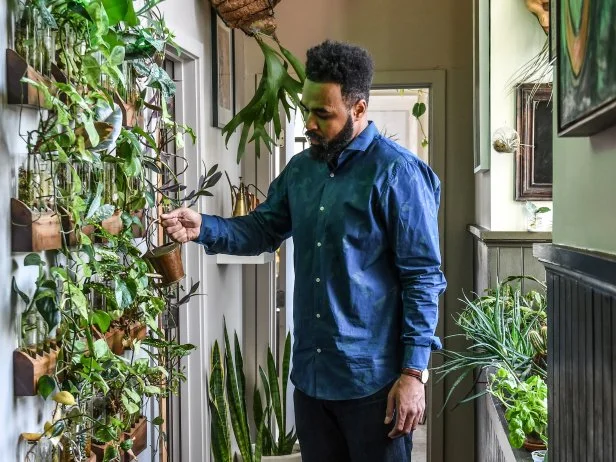
Courtesy of Hilton Carter
Traditional Watering. Pouring the water directly on top of the soil. Most plants can simply be watered the traditional way, by pouring water on top of the soil. To ensure the plant’s roots can access the water, pour it until it runs out the pot’s drainage holes. This excess water can sit in the pan for a few minutes to allow the plant to soak up what it needs, but you’ll want to pour anything leftover out after five to 10 minutes to prevent root rot.
Bottom Watering. Pouring water into a dish, allowing the plant to soak it up through the bottom of the pot. Plants like succulents and cacti react poorly to moisture on their foliage or stems. These and many other plants benefit from bottom watering.
Soaking. Placing the plant in a sink or dish filled with water for an extended period of time. Plants that thrive around water and swampy areas will benefit from a lot of water and may even like to be soaked on occasion.
Misting. Spritzing the foliage with a light mist of water. Generally, plants that thrive in humid environments like to be misted, but be careful not to let moisture sit on the foliage for too long, as this can lead to disease. Misting in the morning will allow the warmer temps and higher light of the day to dissipate the moisture.
The Proper Way to Water Your Garden
Keep your plants happy. Here are the top 10 do's and don’ts for watering plants efficiently.
Pro Tip: Allowing the water to run out of the soil also benefits the plant by washing away salts and minerals that have built up in the soil. Occasionally placing plants in a sink and running water through their soil can be very effective.
Overwatering vs. Underwatering: What to Look For
While everyone knows plants need water to survive, many aspiring plant parents underestimate the dangers of overwatering their new green babies. Different plants have different ways of telling you that they’re receiving too much or too little water, but foliage is the most reliable indicator. Wilting leaves and drooping stems typically mean the plant needs water, while crispy brown leaf tips can be a sure sign that the plant is thirsty.
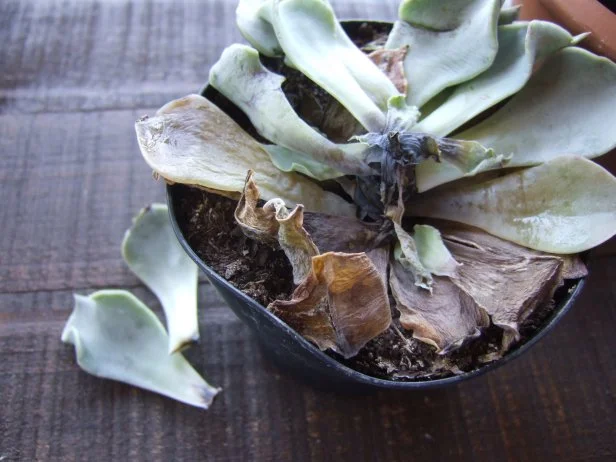
Julie Martens Forney
On the other hand, yellowing leaves are often a telltale sign of overwatering. Overwatering can lead to root rot, which can be deadly and require drastic measures to save your plants. Never water when the soil is wet and only use containers with drainage holes to avoid overwatering. A layer of rocks or recycled plastic bottles beneath the potting soil can encourage proper drainage. If you suspect root rot, look for signs like bacterial and fungal growth by smelling the plant or identifying fungus gnats around the plant.
While you may be tempted to simply wait for these signs before adjusting your routine, it’s better to avoid over or underwatering altogether or you risk damaging your plant. If you’re noticing foliage damage like yellowing leaves, leaf drop or burning, but adjusting your watering doesn’t solve it, the problem may lie elsewhere. Be careful not to overlook issues like an excess of fertilizer, too much or too little light, too much or too little humidity and improper soil.







